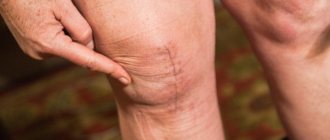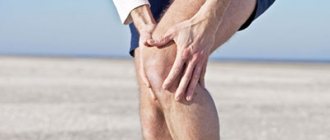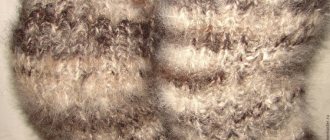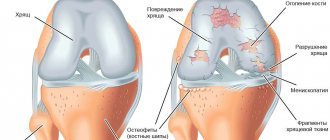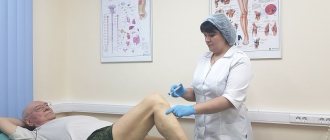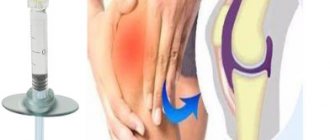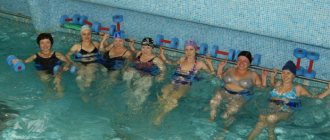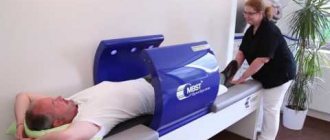For the treatment of arthrosis of the knee joints (KJ), various methods are used, among which physical therapy is of particular importance. Exercise therapy has many effective complexes and techniques, but today Nordic walking (NS) is gaining more and more popularity. What is the meaning of this therapeutic technique and how to use it correctly for arthrosis of the joint? You will find a comprehensive answer to the question in our article.
Arthrosis
Symptoms and treatment of arthrosis
Arthrosis is the destruction of cartilage tissue. Under the influence of this pathological process, the following negative phenomena occur in the human body:
- the synthesis of new cartilage tissue cells is disrupted;
- cartilage is gradually destroyed under the influence of certain mechanical factors;
- cartilage fibers suffer from a lack of nutrients.
Arthrosis happens:
- Primary. It is also called idiopathic. Scientists have not yet been able to establish the cause of the development of this form of arthrosis.
- Secondary. Its development is provoked by hormonal changes, inflammatory processes and impaired metabolism.
Arthrosis is accompanied by changes at the biochemical level. The intra-articular fluid changes its composition, the synovial membrane loses its natural stability, and the articular joint does not tolerate physical activity well. If, against the background of these phenomena, the joints become overcooled or become very tense, inflammation begins in them.
Arthrosis manifests itself with the following symptoms:
- Severe aching pain with periodic manifestations. The pain worsens after exercise and goes away during rest.
- Sensation of a foreign object in the joint.
- Stiff mobility of the damaged joint.
Arthrosis is also accompanied by:
- swelling near the affected joint;
- redness of the skin in the area of damage;
- limited mobility and stiffness of the joint;
- crunching sound when moving.
Important! If the patient ignores the manifestations of the disease, he may move on to other joints.
Treatment of arthrosis consists of:
- eliminating pain;
- relief of inflammation;
- restoration of proper metabolism;
- improving blood circulation in the affected area;
- restoration of cartilage;
- returning the joint to natural mobility.
Treatment involves the use of:
- medications (chondroprotectors, muscle relaxants, drugs with analgesic and anti-inflammatory effects);
Chondroprotectors
- physical procedures (magnetic therapy, laser and ultrasound therapy, electrical stimulation);
Magnetotherapy
- oxygen therapy;
- massage sessions;
- therapeutic exercises.
Massage
The patient is also recommended to visit sanatorium-resort areas.
Stages
In total, there are three stages of the disease:
First stage
Only the composition of the synovial fluid is disrupted, while pronounced morphological changes are invisible or absent.
The fluid begins to increasingly enrich the cartilage tissue with essential nutrients, and the stability of the cartilage noticeably decreases even under normal or light loads. Due to frequent overload, pain or inflammation may occur. Second stage
The destruction of articular cartilage begins and the appearance of marginal bone growths at the edges of the articular surface.
Pain from rare and short-term develops into constant and habitual, and the processes of inflammation either worsen or cease to bother you for a while. At the second stage, a violation of the basic functions and work of the periarticular muscles was noted. Third stage
During the third stage of arthrosis of the joints, the cartilage of the joints is worn away almost completely. There is also deformation and violation of the integrity of the articular platform with a subsequent change in the axis in the limb. The periarticular muscles become shorter or, conversely, longer. The natural nutrition of the joint, as well as the surrounding tissues, is disrupted.
Why does arthrosis occur?
Experts identify several factors that can cause arthrosis in the knee. The joint begins to become affected due to improper formation of cartilage. The production of cartilage cells is disrupted due to:
- unbalanced or malnutrition;
- injuries;
- pathologies of the genetic apparatus;
- impaired metabolism.
Dysplasia, a congenital change in articular shape, plays a special role in the occurrence of arthrosis. The likelihood of developing joint diseases increases if the joint becomes inflamed or an autoimmune disorder develops. These reasons are the main ones for the occurrence of secondary arthrosis. The risk of degenerative disorders increases:
- occupational hazards;
- overweight;
- bad ecology;
- disorders in the endocrine system;
- flat feet;
- low estrogen levels (at risk are women during menopause).
Is walking beneficial for arthrosis?
Many patients sincerely doubt whether it is possible to practice walking with arthrosis and gonarthrosis of the joint. After all, these ailments provoke mechanical pain in the knees just after physical activity, and walking is just like that. At the same time, some patients noted that their knees began to hurt immediately after waking up in the morning or after a long rest. But as soon as they move a little, the initial discomfort begins to subside. True, the relief does not last long, and after standing on your feet your knees begin to hurt again. Although the pain described above manifests itself in different ways, they are a consequence of one factor - thinning of the cartilage.
Important! When a joint does not move, microscopic particles of cartilage settle on the joint. It is because of them that it is difficult and painful for a person to move a joint after rest. During movement, this plaque is “washed away”, and the joint begins to function normally.
Mechanical pain occurs due to the fact that the bone tissue suffers from increased stress in those places where the cartilage is thinnest. In order to at least slightly relieve the pressure on the joint, the muscles and ligaments become more tense, thereby causing pain. The weaker the muscle tissue, the faster it gets tired and starts to hurt. As for ligaments, they can be stretched and injured under the influence of high loads. What is the therapeutic effect of walking?
- Blood circulation accelerates, joints receive all the substances necessary for recovery.
- Synovial fluid begins to circulate faster in the joint. This way it is lubricated and moves better.
- Muscle tissue strengthens, becomes more elastic and resilient. She begins to support the joint well and relieve it.
- Ligaments become elastic and resistant to injury. They protect the knee from dislocations, restore and maintain its flexibility, and make the knee mobile.
- Metabolism increases, calories are burned faster. A person loses extra pounds, which also negatively affects the CS.
- Walking has a positive effect on the immune system. It improves mood and makes a person more resilient.
What is Nordic walking
Nordic walking differs from ordinary walking in that when moving, a person pushes off the ground with poles - the same as when skiing. The sport was invented by Finnish skiers who wanted to continue training in the warm season.
During Nordic walking, much more muscles are used than during normal walking - about 90% instead of 60%. This is because poles increase stress on the arms, neck and shoulders. But the main difference from regular walking is that the load is distributed evenly, instead of falling entirely on the lower body. This factor makes the sport more acceptable and safe for people with gonarthrosis or arthrosis of the ankle joints than regular walking.
A fifth of the Finnish population practices Nordic walking
Nordic walking for arthrosis of the knee joint: what are the benefits?
CX is called accelerated walking using special sticks. The AC uses about 90 percent of all muscles in the human body. It is very energy-intensive: when performing it, a person burns the amount of calories required for slow running. But, unlike running, it is much safer and has a minimal list of contraindications. The sticks used for SC unload damaged knee joints and accelerate their regeneration.
For a long time, there was a discussion between doctors about the advisability of using SC for the treatment of arthrosis. As a result, it was decided that this method was very effective.
It is important for patients to follow the correct principles of SH:
- The right arm is bent at the elbow, slightly moved forward, resting on a clamped stick. The left arm is slightly lowered, the body is tilted. The main weight of the body passes to the right side of the body.
- The left foot takes a step forward, the foot lands on the heel. A smooth roll is made from the heel onto the toes. The weight shifts to the left side, but the right hand serves as a support.
- The weight shifts completely to the left side. The right leg and cane in the left hand push off the surface. The push is directed first down, then back. The left hand relaxes, the cane does not take part in movement.
- The right leg takes a step forward, the left arm is brought forward, rests on the stick, and the body weight is partially transferred to these limbs.
- The left leg and right arm push off from the surface and move forward.
According to statistics, few are able to understand the intricacies of CX without outside help. But experts advise not to engage in self-study and seek help from a doctor.
It is recommended not to prescribe SCS to patients who:
- suffer from hypertension or hypertensive crisis;
- underwent surgery on the peritoneum;
- being treated for an infectious disease.
Note! It is strictly forbidden to replace special poles for CX with support canes, trekking and ski poles, as well as other improvised means.
According to WHO standards, you need to do SH five times a week. The average training duration is 30 minutes. But you need to start with five-minute classes, gradually increasing the load and their duration. The pace of gait depends on the degree of development of the disease and the individual characteristics of the patient.
Nordic walking
Nordic walking with poles: an excursion into history
Nordic walking was successfully used in pre-war times, and Finnish skiers can be considered its founders. Athletes were so afraid of losing their shape over the summer that they began to walk in areas without snow and skis, using ski poles when walking. It was then that the effectiveness of such walking was first noticed.
This fact interested sports medicine specialists, and in the 80s the phenomenon of the beneficial effects of such training on the body and its amazing effectiveness were studied. As a result, walking with poles gained recognition first in the Scandinavian countries, and a little later became popular throughout the world.
In Belarus, people learned about such walking relatively recently. But clubs for Nordic walking lovers have already been organized in all major cities.
Recently, Swedish walking with poles has been used not only for general health improvement, but also as a therapeutic and rehabilitation tool. For example, such classes are included in the German rehabilitation program after total leg replacement.
Walking technique on your knees
Experts have spent a lot of time developing exercises that will reduce stiffness in affected knee joints. There is an opinion that walking on your knees will help heal your knees.
If the patient walks correctly on his knees, he will:
- the intensity of pain in the affected joint will decrease;
- the CS and ODA as a whole will be strengthened.
While performing a health exercise, you need to gradually load the muscles and sore joints. The technique is suitable for use at home. To do this you need:
- Get on your knees.
- Walk forward/backward on them.
- Keep your back straight, do not bend your torso forward.
The duration of the session is determined only by the attending physician based on the patient’s individual indicators.
Walking on your knees
Additional methods of treating knee arthrosis
Since arthrosis greatly harms the patient’s health, additional therapeutic procedures can be used for a speedy recovery. One of these is a steam bath or sauna. The heat from these sources helps:
- reduce the intensity of pain caused by knee deformity;
- activate blood circulation;
- relieve muscle spasm;
- regenerate cartilage;
- accelerate the exit of decay products from the body.
You should visit a bathhouse or sauna for medicinal purposes only with a medical prescription. For patients with inflammation of the knee joint, this treatment method can only do harm.
It won't hurt to adjust your daily diet. To improve the condition of cartilage, you need to constantly eat foods enriched with:
- Collagen. Contained in aspic, milk, fruit jelly, legumes, lean fish and meat.
- Sulfur and selenium. These substances are found in eggs, cereals, apples, gooseberries, plums, radishes, and sea fish.
- Omega-3 acids. Fatty sea fish are a good source of this acid.
Bottom line
Arthrosis is a serious disease that requires timely diagnosis and proper treatment. Otherwise, it may cause a person's disability.
Similar:
- Nordic walking with coxarthrosis: is it possible to do this sport?
- List of exercises for knee joints with arthrosis, when are exercises useful and when should they not be done?
- What is Nordic walking, can it be used for the diagnosis of osteochondrosis?
- Classification of arthrosis, folk remedies for treating pathology, effective recipes for help at home
- List of exercises for hands with arthrosis, when should they not be done?
- How can you restore cartilage tissue in a diseased joint, causes of cartilage destruction, methods of conservative therapy, surgery and prevention
- The benefits and harms of an exercise bike for arthrosis of the knee joint, indications for exercise and contraindications
How does Nordic walking work?
It works comprehensively:
- perfectly strengthens ligaments and muscles;
- increases their tone;
- activates metabolism;
- significantly expands the possibilities of movement;
- activates blood circulation;
- maintains joint mobility at the required level;
- normalizes the nervous system;
- makes the joints of the ligamentous apparatus much stronger;
- removes existing stiffness;
- removes pain symptoms.
Nordic walking classes, when the height of the poles is selected correctly according to height, a warm-up is done, and comfortable and high-quality shoes are worn, provide several additional benefits:
- the use of poles removes the load from the joints, thanks to additional support points;
- weight load is minimized;
- the body as a whole is strengthened;
- the spine is aligned;
- the back and abs are strengthened, muscle work is activated;
- hands are actively working.
Each of the factors listed above removes the impact of negative factors. And makes the treatment of the disease more effective. And walking “Scandinavian style” strengthens the spirit, perfectly lifts your spirits, and gives you energy, which is also extremely important.

